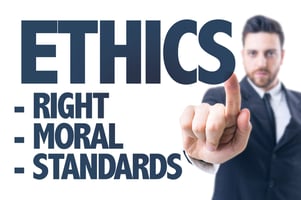What is FMLA?
Understanding the difference between short-term disability and FMLA leave
 What is short term disability?
What is short term disability?
Short-term disability is a leave of absence from work that is typically used for medical reasons. This type of leave can be paid or unpaid, and is usually offered by employers as part of their benefits package. Short-term disability can last anywhere from a few days to several months, and allows employees to take the time they need to recover from an illness or injury without having to worry about losing their job.
Disability insurance:
Disability insurance is a type of insurance that provides financial assistance to individuals who are unable to work due to an illness or injury. This type of insurance can help to cover things like lost wages, medical bills, and other expenses. Disability insurance is typically offered by employers as part of their benefits package, but it can also be purchased privately.
Short term disability insurance:
Short-term disability insurance is a type of insurance that provides financial assistance to individuals who are unable to work for a short period of time due to an illness or injury. This type of insurance typically covers lost wages and other expenses for a period of time up to six months. Short-term disability insurance can be offered by employers as part of their benefits package, or it can be purchased privately.
Long term disability insurance:
Long-term disability insurance is a type of insurance that provides financial assistance to individuals who are unable to work for an extended period of time due to an illness or injury. This type of insurance typically covers lost wages and other expenses for a period of time up to several years. Long-term disability insurance can be offered by employers as part of their benefits package, or it can be purchased privately.
What is FMLA leave?
Family and Medical Leave Act (FMLA) leave is a type of leave that is offered to employees who need to take time off for a medical reason. This type of leave can be used for things like maternity leave, paternity leave, or to care for a sick family member. FMLA leave is typically unpaid, but employees are still protected from losing their job while they are out on leave.
So, what’s the difference between short-term disability and FMLA leave?
The main difference is that short-term disability is typically used for medical reasons, while FMLA leave can be used for a variety of reasons. Short-term disability is also typically paid, while FMLA leave is not. However, both types of leave offer employees protection from losing their job while they are out on leave.
Before taking STD or FMLA leave, there are a few things to consider. For example, you will need to determine whether you meet the eligibility requirements for each type of leave. You will also need to decide how much leave you need to take and whether you can afford to take unpaid leave.
Paid vs. unpaid leave:
One of the main differences between short-term disability and FMLA leave is that short-term disability is typically paid, while FMLA leave is not. This means that if you take short-term disability leave, you will still receive a portion of your salary from your employer. However, if you take FMLA leave, you will not receive any pay from your employer.
Qualifying for one, the other, or both:
Another key difference between short-term disability and FMLA leave is that they have different eligibility requirements. To be eligible for short-term disability, you typically need to have worked for your employer for a certain period of time and to have suffered from a qualifying illness or injury. To be eligible for FMLA leave, you typically need to have
Knowing the differences can make a smoother application process
It is important to know the difference between short-term disability and FMLA leave so that you can choose the right type of leave for your situation. If you are unsure about which type of leave you are eligible for, be sure to talk to your employer or a qualified attorney.
Disability income insurance:
Disability income insurance is a type of insurance that provides financial assistance to individuals who are unable to work due to an illness or injury. This type of insurance can help to cover things like lost wages, medical bills, and other expenses. Disability income insurance is typically offered by employers as part of their benefits package, but it can also be purchased privately.
There are two main types of disability income insurance: short-term and long-term. Short-term disability income insurance typically provides financial assistance for a period of time up to six months, while long-term disability income insurance can provide financial assistance for a period of time up to several years.
When choosing a disability income insurance policy, it is important to consider things like the length of time you need coverage, the amount of coverage you need, and whether you want a policy that covers partial or total disability. You should also compare different policies to find the one that best meets your needs.
Key takeaways:
- Disability income insurance is a type of insurance that provides financial assistance to individuals who are unable to work due to an illness or injury.
- This type of insurance can help to cover things like lost wages, medical bills, and other expenses.
- It is typically offered by employers as part of their benefits package, but it can also be purchased privately.
- There are two main types of disability income insurance: short-term and long-term.
- When choosing a disability income insurance policy, it is important to consider things like the length of time you need coverage, the amount of coverage you need, and whether you want a policy that covers partial or total disability.
- If you have any questions about disability income insurance, be sure to talk to your employer or a qualified insurance agent.
Glossary:
Insurance company: An organization that provides insurance coverage to individuals or businesses.
Benefits package: A set of benefits offered by an employer to their employees. This can include things like health insurance, life insurance, and disability income insurance.
Eligibility requirements: The criteria that must be met in order to qualify for something. For example, the eligibility requirements for short-term disability income insurance may include having a certain amount of time worked at the company and being unable to work due to an illness or injury.
Leave: A period of time during which an employee is away from work. This can be for a variety of reasons, such as vacation, medical leave, or parental leave.
Elimination period: The amount of time that must pass before an individual can begin to receive benefits from their disability income insurance policy. This period is typically between 0 and 180 days.
Maximum benefit period: The longest amount of time that an individual can receive benefits from their disability income insurance policy. This period is typically between 2 and 5 years.
Partial disability: A disability that prevents an individual from performing all of the duties of their job, but does not prevent them from working altogether.
Total disability: A disability that prevents an individual from working altogether.
Short term disability benefits: Benefits that are paid to an individual for a short period of time, typically up to six months.
Long term disability benefits: Benefits that are paid to an individual for a long period of time, typically up to several years.
Disability coverage: Insurance that provides financial assistance to individuals who are unable to work due to an illness or injury.
Major medical insurance: Health insurance that covers a wide range of services, including hospitalization, surgery, and doctor’s visits.
Expected benefit ratio: The percentage of an individual’s salary that would be replaced by their disability income insurance policy. For example, if an individual has a policy with a 50% expected benefit ratio and they make $50,000 per year, their policy would replace up to $25,000 of their lost wages.
After tax income: Income that has been taxed by the government.
Benefits payable: The amount of money that an individual will receive from their disability income insurance policy. This amount is typically a percentage of their salary.
Private insurance: Insurance that is purchased by an individual, rather than being provided by an employer.
Serious illness: An illness that requires hospitalization or is expected to result in death.
Alzheimer’s disease: A degenerative disease that affects the brain and leads to memory loss, confusion, and eventually death.
Living expenses: The costs of food, shelter, and other necessities.
Non-working spouse: A spouse who does not have a job or who is not working due to illness or injury.
Disabled parent: A parent who is unable to work due to an illness or injury.
Future premiums: The cost of insurance coverage for a policy that has not yet been purchased.
Medical records: Records of an individual’s medical history, including treatments, diagnoses, and medications.
Pre-existing condition: A medical condition that existed before an individual’s insurance coverage began.
Underwriting: The process of assessing an individual’s risk in order to determine their insurance premiums.



